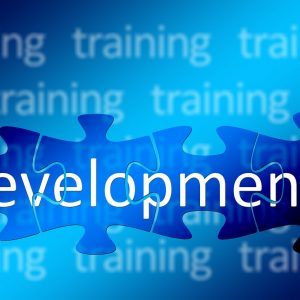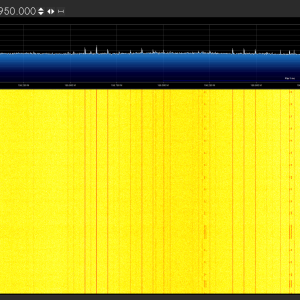SDR Course Overview
This one-day workshop will immerse you in the world of Software Defined Radio (SDR) using SDR# (SDRSharp), a versatile and powerful software application. Designed for beginners and hobbyists, this hands-on course will guide you through setting up SDR#, exploring the radio spectrum, and decoding various signals. By the end of the workshop, you will have the practical skills to continue your SDR journey independently.
Instructor: Craig Miles
Course Duration: 1 Day Workshop (6-8 hours)
Level: Beginner to Intermediate
Prerequisites:
- Basic knowledge of radio frequency (RF) concepts.
- Bring a Windows laptop with administrator rights.
- Optional: Bring your own SDR dongle (e.g., RTL-SDR) if available.
Materials Provided:
- SDR dongles for classroom use.
- Antennas.
- USB flash drives with pre-installed SDR# software and drivers.
- Course handouts and quick reference guides.
SDR Course Schedule
Session 1: Introduction to SDR and SDR#
Duration: 60 minutes
Objectives:
- Understand the basics of Software Defined Radio (SDR).
- Learn about SDR# and its capabilities.
- Set up the necessary hardware and software.
Lecture and Demonstration:
- What is SDR?
- Overview of radio communication.
- Differences between traditional and software-defined radios.
- Real-world applications of SDR (e.g., radio astronomy, signal analysis).
- Introduction to SDR Hardware:
- Explanation of SDR dongles (RTL-SDR, HackRF, etc.).
- Antenna types and their uses.
- Installing SDR# and Drivers:
- Step-by-step installation of SDR# on Windows.
- Driver installation (Zadig for RTL-SDR).
Hands-On Activity:
- Install SDR# and drivers on your laptop.
- Connect the SDR dongle and verify the setup.
Q&A and Troubleshooting:
- Instructor assistance with installations.
- Discussion on potential setup issues and solutions.
Session 2: Getting Started with SDR#
Duration: 90 minutes
Objectives:
- Learn the SDR# interface and basic settings.
- Tune into different frequencies and explore the radio spectrum.
Lecture and Demonstration:
- Overview of the SDR# Interface:
- Main controls (frequency, gain, bandwidth).
- Waterfall display and spectrum view.
- Keyboard shortcuts and quick tips.
- Basic Settings and Configurations:
- Choosing the right sample rate.
- Adjusting gain settings for optimal reception.
- Exploring modulation types (AM, FM, SSB, etc.).
- Tuning into Broadcast FM Radio:
- Finding and tuning into local FM stations.
- Exploring the audio settings.
Hands-On Activity:
- Tune into a local FM station.
- Adjust gain, bandwidth, and modulation settings to improve reception.
Q&A and Peer Learning:
- Discuss challenges and solutions with your classmates.
- Instructor walkthrough of common issues.
Session 3: Exploring the Radio Spectrum
Duration: 90 minutes
Objectives:
- Explore different frequency bands (VHF, UHF).
- Understand how to scan for active frequencies.
Lecture and Demonstration:
- Navigating the Spectrum:
- Overview of different frequency bands and their uses.
- Common frequencies for various services (airband, maritime, etc.).
- Using SDR# to Explore:
- Tuning to airband frequencies and decoding AM signals.
- Introduction to frequency scanning.
- Customizing the SDR# Interface:
- Creating and saving custom frequency lists.
- Organizing your workspace for specific tasks.
Hands-On Activity:
- Explore the airband and tune into live aircraft communications.
- Use the frequency manager plugin to save and manage your favorite frequencies.
Group Discussion and Debrief:
- Share interesting signals you’ve found with the class.
- Discuss different uses for SDR# in various fields.
Lunch Break (60 minutes)
Session 4: Decoding Digital Signals with SDR#
Duration: 90 minutes
Objectives:
- Learn how to receive and decode digital signals.
- Set up and use external decoders with SDR#.
Lecture and Demonstration:
- Introduction to Digital Signals:
- Overview of digital signals (ADS-B, APRS, etc.).
- Practical applications of decoding digital signals.
- Setting Up Digital Decoders:
- Installing and configuring virtual audio cables.
- Integrating SDR# with decoding software (e.g., DSD+, WXtoIMG).
- Decoding Examples:
- ADS-B signals from aircraft.
- NOAA weather satellite images.
Hands-On Activity:
- Decode ADS-B signals and visualize live aircraft data.
- Capture and decode a NOAA weather satellite image.
Instructor Assistance and Group Feedback:
- Walk around to assist with setup and troubleshooting.
- Group reflection on challenges and insights.
Session 5: Advanced Features and Customizations
Duration: 60 minutes
Objectives:
- Explore advanced SDR# plugins and features.
- Customize SDR# for specific use cases.
Lecture and Demonstration:
- Advanced Plugins:
- Overview of advanced plugins (e.g., DDE Tracking, TETRA, etc.).
- Installing and configuring plugins.
- Optimizing SDR# Performance:
- Managing CPU usage and optimizing settings.
- Tips for improving signal reception (e.g., filters, advanced gain settings).
- Customizing the Interface:
- Setting up custom profiles for different tasks.
- Personalizing SDR# to suit your workflow.
Hands-On Activity:
- Install and use an advanced plugin of your choice.
- Customize SDR# for a specific use case (e.g., satellite tracking or scanning local emergency frequencies).
Wrap-Up Discussion:
- Share your custom setups with the class.
- Instructor feedback on optimizing performance and customizations.
Final Group Project: Build an SDR Listening Station
Duration: 60 minutes
Objective:
- Apply what you’ve learned to set up a complete SDR listening station.
Instructions:
- Choose a Use Case:
- Each group selects a specific use case (e.g., FM radio, airband, weather satellites).
- Set Up the SDR Station:
- Configure SDR# with the necessary plugins and settings.
- Ensure the setup is optimized for the chosen use case.
- Presentation:
- Each group presents their SDR station setup to the class.
- Explain the process, challenges, and solutions.
Instructor Feedback:
- Provide constructive feedback and suggestions.
- Highlight best practices and creative solutions.
Course Wrap-Up
Duration: 30 minutes
Reflection and Q&A:
- Open discussion on the day’s learning experiences.
- Answer any remaining questions.
Certificates of Completion:
- Distribute certificates to participants.
Resources and Next Steps:
- Provide links to additional resources, communities, and further learning materials.
- Discuss opportunities for advanced SDR course or projects.
Contact us for further details and to book the SDR Course.




